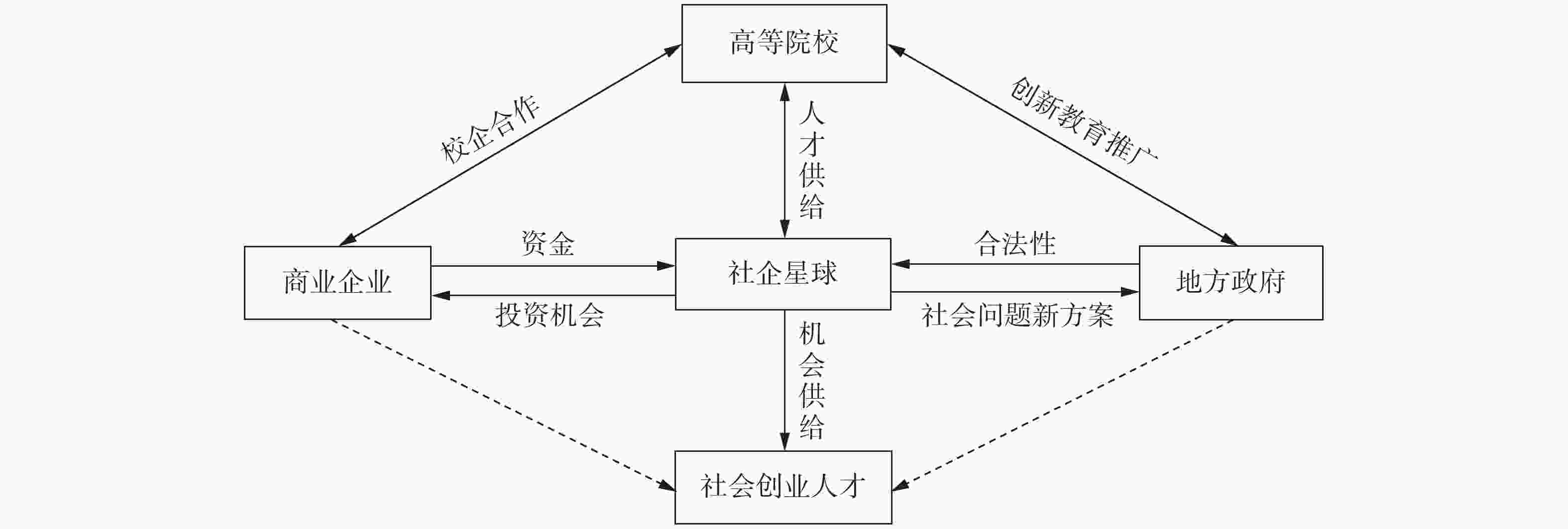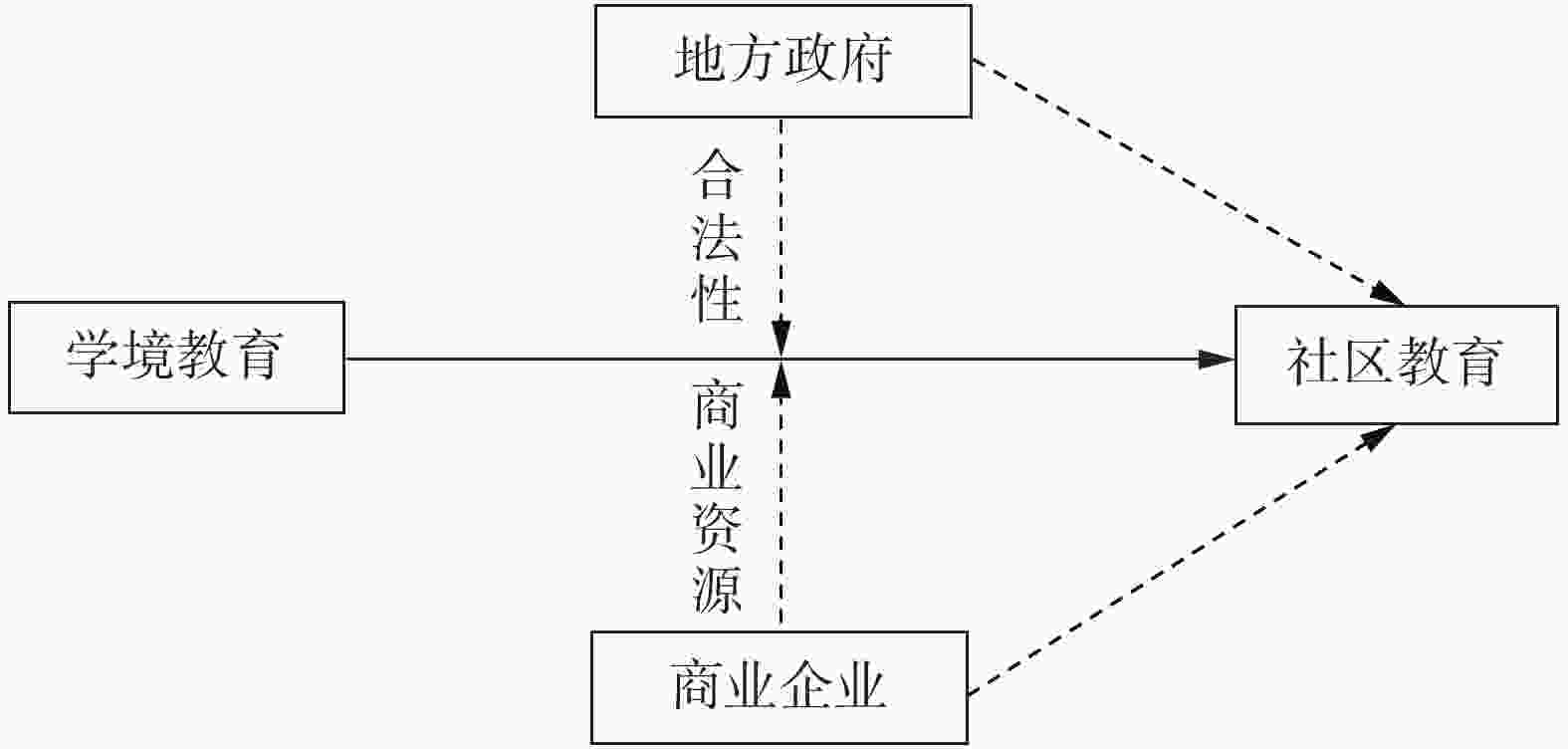社会企业混合逻辑与跨部门协同
Social Enterprise’ Hybrid Logic and Cross-sectoral Collaboration
-
摘要: 跨部门协同是复杂社会问题管理的普遍难题。区别于多重制度逻辑视角对逻辑冲突的强调,混合逻辑视角更加重视逻辑的共存融合,为跨部门协同效率提升提供了新的理论解释。作为不同部门间的黏合剂,社会企业的混合逻辑可以弥合不同逻辑冲突,强化跨部门协同的目标共识和策略共识,使协同具有更强逻辑向心力和逻辑联通性,提升组织混合程度并增进混合价值。当前社会企业参与的跨部门协同形成了平台型、聚焦型、桥梁型和拼凑型等混合逻辑实践摸式。社会企业混合逻辑“出发点—行为—结果”的机理研究,弥补了现有多重制度逻辑研究的不足,为跨部门协同治理奠定了理论基础。Abstract: Cross-sectoral collaboration is a common problem in organizational management. Different from the emphasis on logic conflict from the perspective of multiple institutional logic, the hybrid logic perspective attaches more importance to the coexistence and integration of logic, providing a new theoretical explanation for the improvement of cross-department collaboration efficiency. The essence of cross-sectoral collaboration that social enterprises participate in is collective behavior driven by hybrid logic, which could reduce logical conflicts that cannot be solved by traditional cross-sectoral collaboration. Based on the theory of hybrid logic, this paper argues that the cross-sectoral collaboration involving social enterprises has stronger logical centrality and higher logical connectivity, and the effectiveness and sustainability of collaboration could be achieved by improving the degree and depth of collaboration. Further research shows that the cross-sectoral collaboration of social enterprises has formed a variety of hybrid logic practice modes, such as platform type, focus type, bridge type and patchwork type.The mechanism research of “logical starting point, logical behavior, logical result” of mixed logic proposed in this paper makes up for the deficiency of existing research on multiple institutional logic, deepens the understanding of the functions of social enterprises and hybrid organizations, and lays a more solid theoretical foundation for cross-department collaborative optimization and governance improvement.
-
Key words:
- hybrid logic /
- institutional logic /
- cross-sectoral collaboration /
- social enterprise
-
表 1 社会企业参与的跨部门协同模式比较
平台型 聚焦型 桥梁型 拼凑型 逻辑
向心力向心力高。不同逻辑和部门的聚焦程度均等,对实现协同任务有相同的重要性 向心力高。不同逻辑和部门
的聚焦程度均等,对实现
协同任务有相同的重要性向心力低。主导逻辑和部门占主导地位,聚焦程度高,边缘逻辑和部门提供辅助性功能,聚焦程度低 向心力低。主导逻辑和部门占主导地位,聚焦程度高,边缘逻辑和部门提供辅助性功能,聚焦程度低 逻辑
联通性联通性强。不同逻辑和部门的关系距离近,联动程度高,构建了无障碍的联动网络 联通性弱。不同逻辑和部门的关系距离远,具有一定的互斥性,信息交互水平低 联通性强。各逻辑和部门的关系距离近,联动程度高,构建了无障碍的联动网络 联通性弱。逻辑和部门间的关系距离远,具有一定的互斥性,信息交互水平低 运用
前提协同目标尽管复杂,但是相对明确;不同部门有明确分工,前期有过相对成熟的合作 协同目标明确,针对性强;不同部门差异化程度较高,前期往往没有合作基础 协同目标广泛,针对性不强;不同部门分工明确,前期有过一定的合作基础 协同目标广泛,针对性不强;不同部门分工不明确,
前期没有合作基础逻辑
结果混合价值创造动力充足,各逻辑功能激活;混合价值创造效率高,部门间联动性强、沟通无障碍;不同逻辑主体之间内部满意度高,能够创造覆盖面广的混合价值 混合价值创造动力充足,各逻辑主体功能激活;以多线并行的协同模式,在满足各逻辑目标的同时,一定程度实现了整体组织协同目标 逻辑主体间联动性强、沟通无障碍,不同逻辑主体之间内部满意度高;但是不同主体的混合价值创造动力不均,整体混合价值创造功能发挥不够 一定程度上降低了混合价值创造成本,但是不同逻辑主体的协同动力不足,整体混合价值创造功能发挥不理想 未来
挑战随着混合程度的增强,组织管理难度也会逐渐增大 组织逻辑联动性差,灵活程度低,无法共担风险 组织向心力弱,容易出现边缘逻辑动能不足的“搭便车”现象 主导逻辑和部门决策权过大,不利于组织创新;协同结构松散,不易维持长期合作 -



 下载:
下载:







 沪公网安备 31010102003103号
沪公网安备 31010102003103号